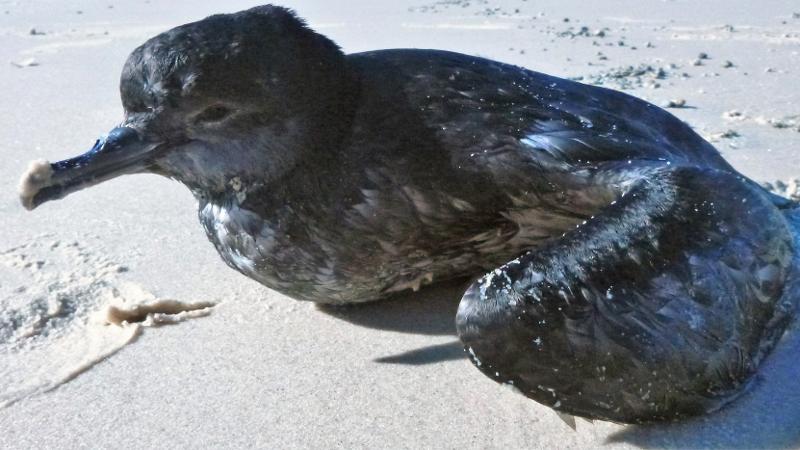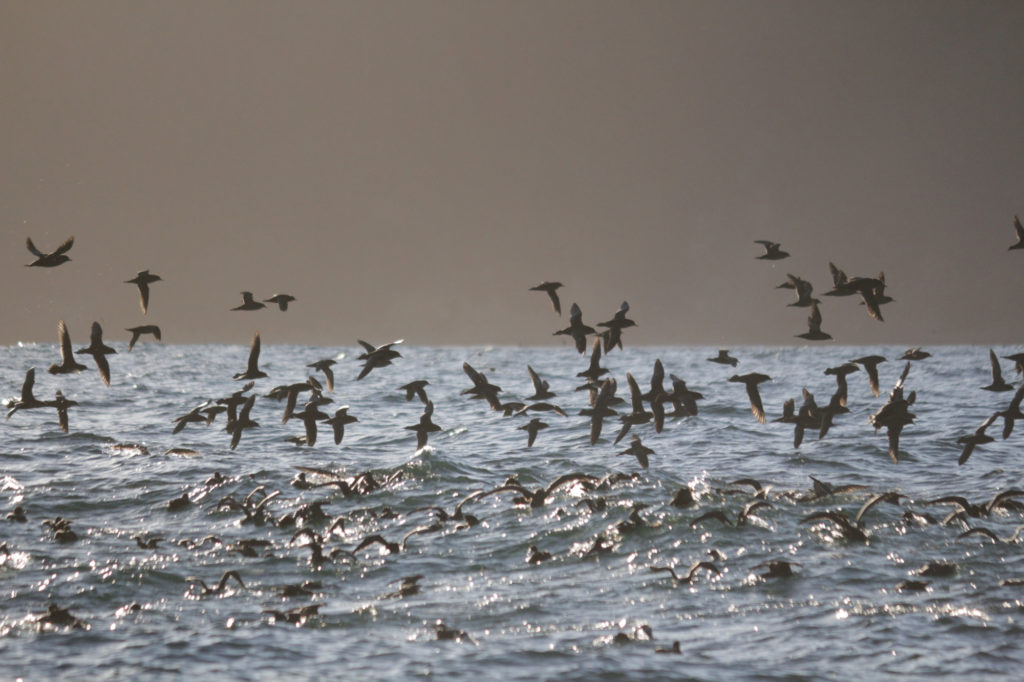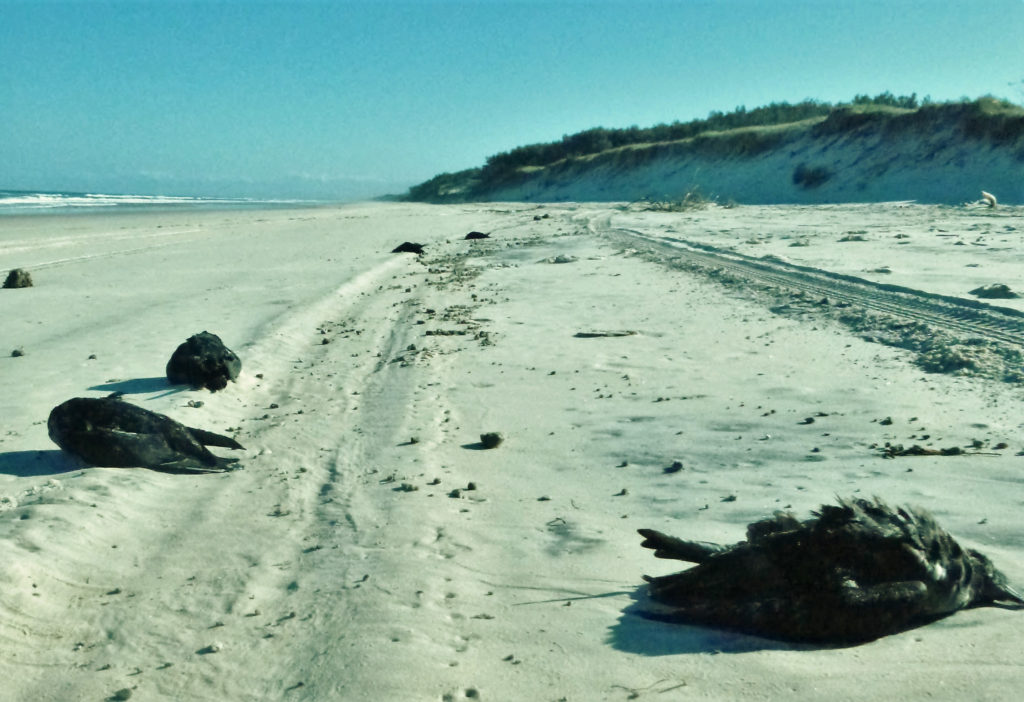Back in 2013, about three million migrating short-tailed shearwater (Ardenna tenuirostris) birds died along the east coast of Australia. This was a tragic event, and it’s only now that scientists have discovered more information on what possibly caused it.
Erupting scientific knowledge
Seabird research undertaken in collaboration with QUT, the Institute for Marine and Antarctic Studies and the University of the Sunshine Coast examined the seabird “wreck”. All in the hopes of discovering the cause of the mass death.
Researchers found the seabirds had been eating a lot of non-food materials. Including floating pumice stone from an underwater volcanic eruption. And plastics.
The findings indicated the birds were eating the pumice out of desperation. They were starving.

Scientists have solved the mystery of the deaths of 3 million short-tailed shearwater birds, commonly known as mutton birds, discovering they ate pumice stone as they were starving.
The migratory tale of the shearwater
Short-tailed shearwaters usually eat krill, small fish and crustaceans. The birds are skilful divers, sometimes diving up to 30 metres below the ocean surface to capture prey.
They migrate from Australia in April to the North Pacific and return late in the year. The seabirds travel a staggering 15,000 kilometres each way during their journey. However, the trip in 2013 was a lethal one.
Our researcher, Dr Lauren Roman, said the returning birds were hungry. So hungry that they didn’t discriminate between what they should and shouldn’t eat.
“Our study investigated whether the birds starved from eating items that weren’t food. Or, whether they ate the pumice and plastics because they were starving,” Dr Roman said.
The results from close to 200 seabirds recovered from beaches along the New South Wales and Queensland coast found 96.7 per cent of birds had ingested pumice or plastic.

A mighty migratory effort: short-tailed shearwaters travel an astounding 15,000 kilometres as part of their migratory journey.
How did scientists solve the mystery?
Dr Roman worked with QUT’s Associate Professor Scott Bryan, who is known for his research on pumice rafts from volcanic eruptions. They came together with other scientists from different disciplines to help solve the mystery of the seabird deaths.
They overlaid shearwater tracking data onto locations of the pumice raft produced by the 2012 Havre eruption in the Kermadec arc north of New Zealand.
“We combined the tracking information data of the short-tailed shearwaters, using location tags on migrating birds, and the geological signature of the ingested pumice,” Professor Bryan said.
“By October 2013 when the shearwaters were returning to Australia, on their annual migration from the North Pacific, the floating pumice was located along their flight path as they approached Australia.”
Between a rock and a hard place
The research team needed to determine where the birds had consumed the pumice.
A short time period between non-food ingestion and death would indicate the birds were already starving at the time of non-food ingestion. A decrease in muscle mass and poor body condition are indicators of a starving state.
Death after a longer period would indicate that the seabirds starved following ingestion of non-food.
By determining when the birds ate the pumice, and their physical condition at the time, the researchers were able to conclude that the birds were already starving when they ate the pumice. And that they had ingested the pumice about 12 to 41 hours before death.

Using tracking data of shearwaters and pumice stones from underwater volcanic eruptions lead scientists to determine the cause of death of the seabirds along the east coast of Australia.
Seabirds’ health reflect marine ecosystem health
That the seabirds were eating rocks potentially indicated broader health issues for the marine ecosystem.
“We don’t know what the shearwaters faced as they migrated to Australia. But our results would suggest they couldn’t access enough prey to complete their journey,” Dr Roman said.
Seabirds are widely considered to be indicators of the health of a marine ecosystem. Mass mortalities can indicate changing food webs and ecological conditions. The team hopes their discovery can help understand the threats seabirds are facing. This includes climate change, marine pollution and the over-exploitation of resources.


9th October 2021 at 3:48 pm
Oct 2021. So far have only seen one shearwater at Port Fairy and it was dead, looked very thin in the body.
17th April 2021 at 9:16 am
Two other considerations:
Possible overfishing at the krill end of scooping operations that is going unnoticed…small crustaceans used as flavours etc in the industry
Noticed 50+ dead shearwaters chicks(underfed) near stormwater outlet at Griffiths Island Port Fairy shortly after folk festival 2019. Possible runoff contamination weakening of species having a cumulative effect. Moyne Shire could test for pesticides etc. towards the end of summers.
15th April 2021 at 2:46 pm
Billions of seabirds (and also billions of land birds) die every year. With around 4 chicks per pair of birds each year the world would long since have been knee deep in birds were this not so. Similar considerations apply to many natural species.
Has CSIRO looked at bird deaths due to lartge windmills – especially birds of prey?
20th April 2021 at 10:22 am
That has been studied at some length (though not necessarily by CSIRO). On the whole the effects of windmills are much less than most others causes of birth deaths and doesn’t make it into the top 10. there is a good overview here: https://theconversation.com/wind-farms-are-hardly-the-bird-slayers-theyre-made-out-to-be-heres-why-79567
The worst incidents of wind turbine bird kills are in Spain where some poorly sited wind farms were put on the migratory routes of birds from Africa in which case about 500 birds were killed over 3 years by 252 turbines. To put that in perspective a dude in East Gippsland killed 400+ wedgetail eagles all by himself.